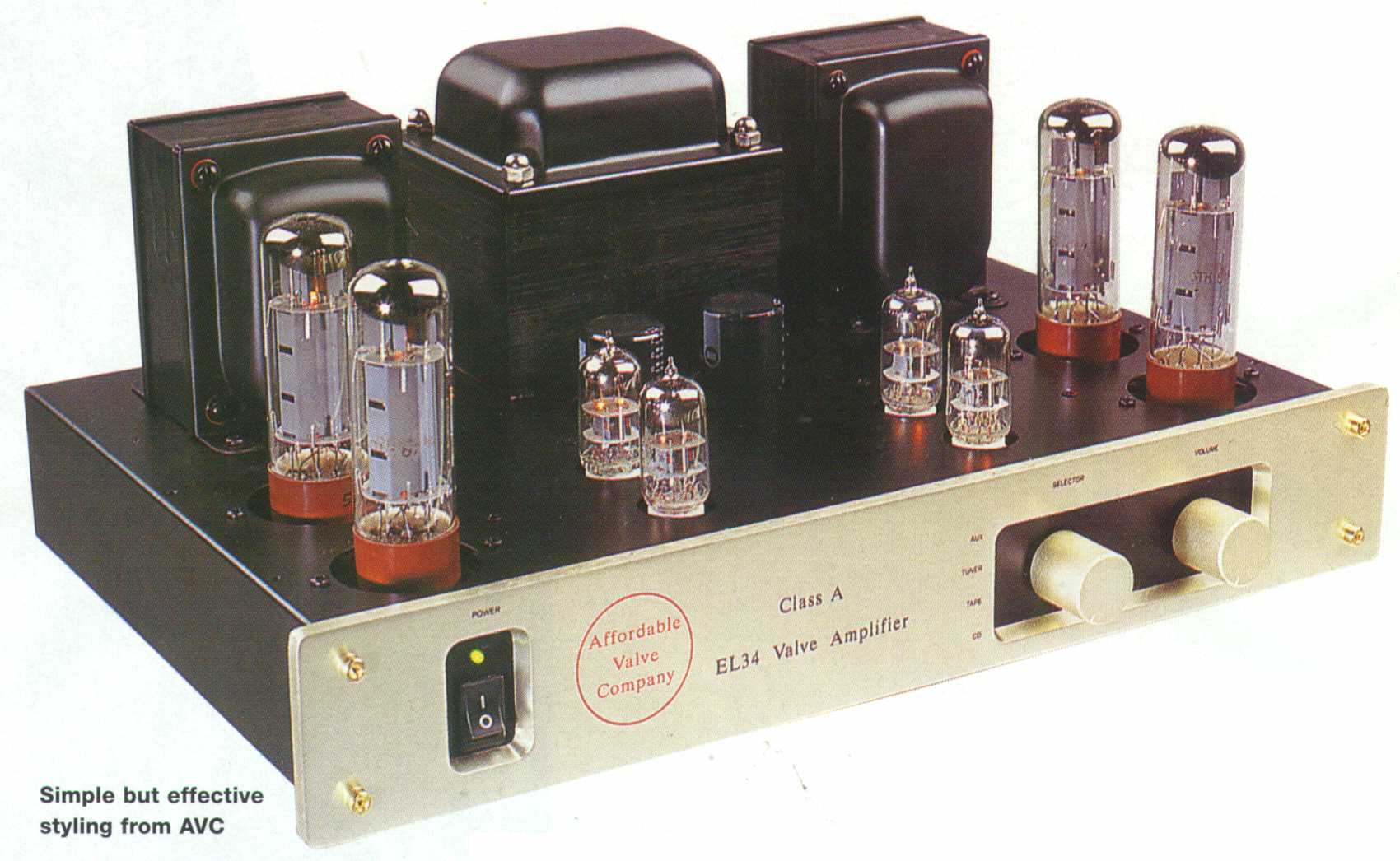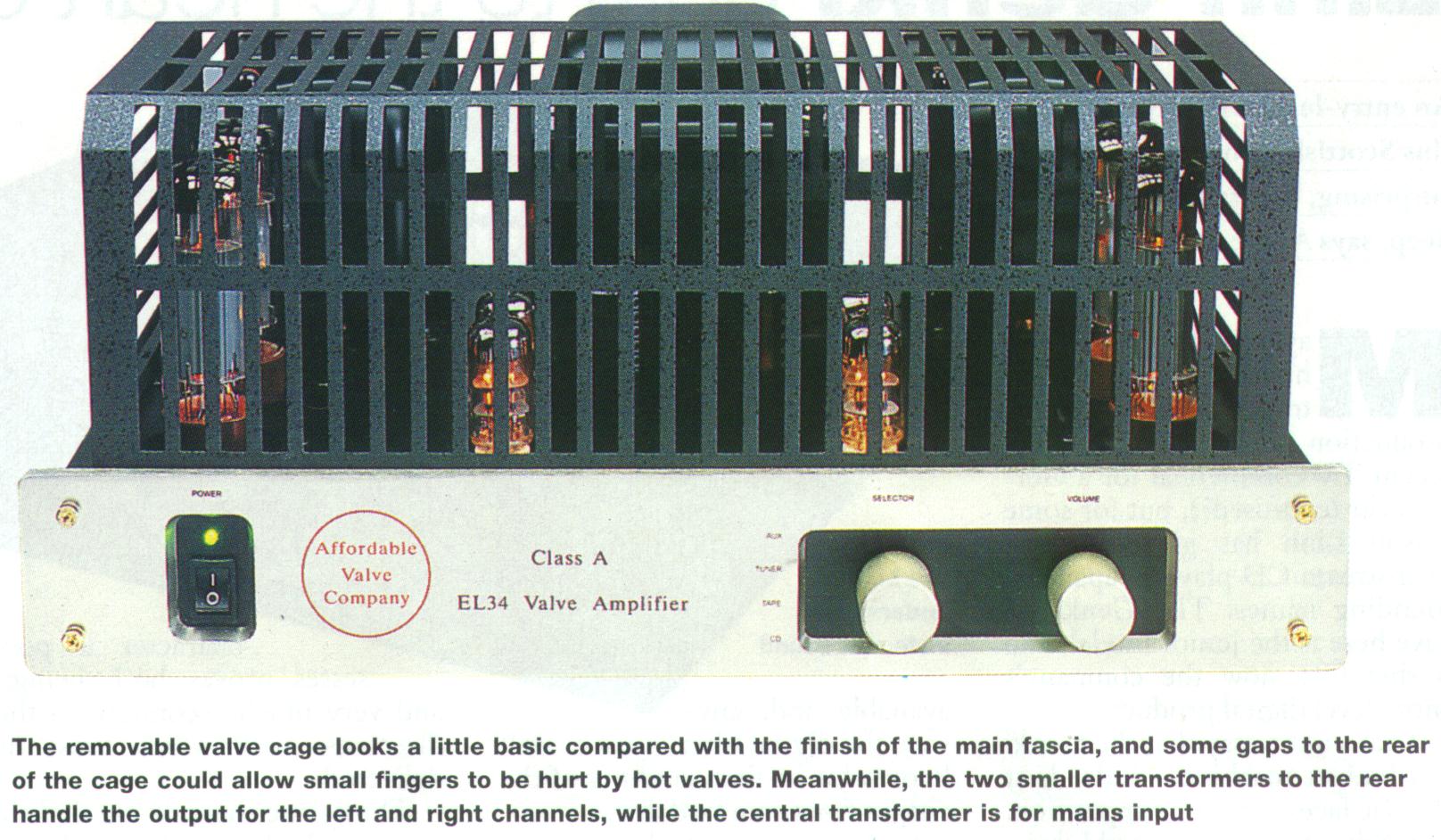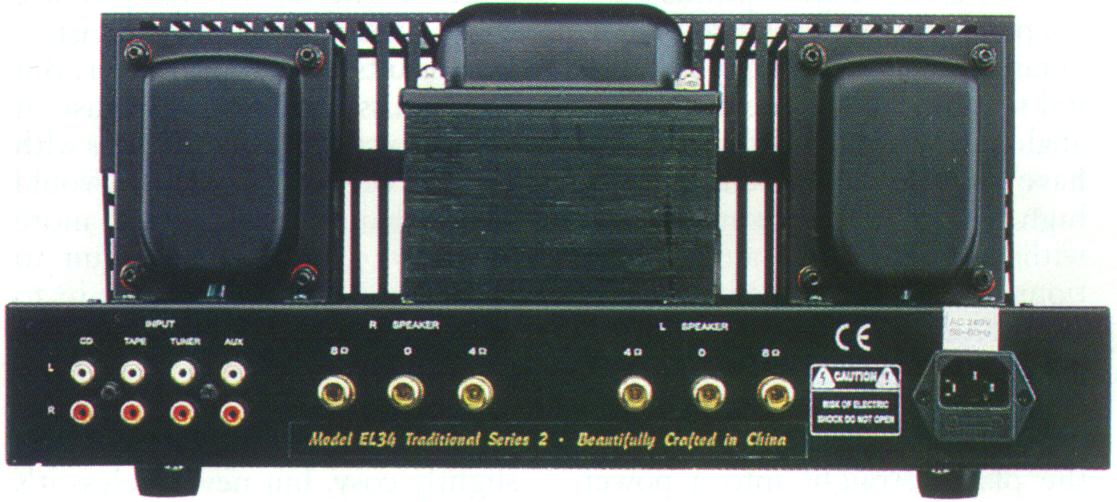![]()
![]() We accept Credit
Cards
We accept Credit
Cards![]()
![]()
![]()
![]() We accept Credit
Cards
We accept Credit
Cards![]()
![]()
|
We apologize that out HTML layout is different
to the printed Gramophone magazine of May 2000.
We had to reduce the scanned files from 50 megabytes
to 1 megabyte for the internet.
We will be pleased to send you a colour copy
of the Gramophone review, if you send us your address.
You can find the latest issue of the Gramophone
magazine in the "music magazine" section
of W H Smith, and NOT the "Hi-Fi magazine" section
of W H Smith.
Click here to go to the website
of Gramophone Magazine
The most authoritative magazine for Record & CD reviews since 1923
!
They did not have a web site back then !

Of course, there will be those of us who aren't so
sure about such an idea, and for those buyers the amplifier is currently
on demonstration at two dealers: Buy from one of them, though,
and you won't get the benefit of the maker's 30 day trial offer.
( Update from AVC - Dealers wants
45% trade discount and sell about 6 of our amplifiers a year ! We
will not get rich , if we had to rely on dealers ! )
I suspect few who try this amplifier for any amount
of time will be too troubled about the refund policy: the AVC EL34 delivers
a sound that's both smooth and
refined, and what it lacks in absolute power - despite a 4O W per channel
output - it more than makes up for with its generosity and weight, allied
to a good degree of clarity and finesse. For the money, few amplifiers
deliver this kind of sound.
The price of the AVC amp seems pitched to tempt those who might think they could otherwise afford such a product only by resorting to a spot of DIY, perhaps buying a valve amplifier kit and assembling it at home. Such a path may seem obvious, but it's certainly not one to be taken on without plenty of knowledge and more than a little experience of electronics construction, however good the kit and its instructions may be. After all, there are lethal voltages inside valve amplifiers, well beyond mains levels, and it could be all too easy to make a mistake while fault-finding a home-constructed amp, and reap the dangerous consequences.
What's more, it's unlikely that anyone but a highly
experienced constructor could build an amplifier to the standards of the
AVC. The brushed aluminium fascia adds a touch of class, and is silk-screened
to a high standard, while the controls operate with a reassuring precision.
A fairly prosaic mains switch is fitted, together
with a green LED tell-tale for mains power, and beyond that there's
nothing but a selector for the four line inputs and a click-stopped volume
control which allows fine changes of level.
To the rear are the input sockets, speaker outputs for 4 ohm and 8 ohm speakers, and the IEC socket for mains input. The AVC supplies its own mains lead, complete with a ferrite ring attached, which claims gives a sweeter, cleaner treble - changing between this and a standard 'kettle lead'-type mains cable from the junk box showed some coarsening of the top end with the ordinary in use, and noticeable smoothing when the AVC lead, which is admittedly rather short, was employed.
The EL34 is pretty well constructed, though it won't trouble larger-scale manufacturers of similarly priced amps when it comes to fit and finish. The valve complement comprises a quartet of 6N3(5670) valves in the preamp stage - two for each channel - and two EL34 per channel delivering the power. The amplifier can be used with the safety cage removed - it's held in place only by four Philips-type screws - but if there are children or animals around it's safest to keep the cage on. That said, it doesn't extend right down to the chassis at the rear, and there is a small gap where tiny fingers may get dangerously close to hot output valves, and this is something I feel AVC might well consider addressing.
|
To the rear of the amplifier are the twin output transformers and the mains input transformer, the mains supply system also using choke regulation to improve sound quality. And that's about it - the amplifier is almost entirely frill-free, and the only options are phono stages, a moving magnet device adding £40 and one for moving coil cartridges £140.
Performance
The AVC EL34 takes about an hour to come on song from power-up, and the Class A design really precludes leaving it powered up all the time. So some patience will be needed on the part of owners: the amp is listenable to within a couple of minutes of being switched on, but its sound smoothes and fills out over the initial hour of use. But it's worth the wait: once 'cooked' this amplifier is capable of remarkable imaging while offering superb ease of listening, and it doesn't produce the grain or glare that can afflict some solid-state amplifiers.
In fact, it takes some time to acclimatise to the
sound of the AVC, simply because much of the forwardness and apparent impact
heard in many amplifiers seems to have gone AWOL. The presentation here
is understated to a fault, and it's only over an extended listening period
that the way this amplifier plays music begins to grow on the listener.
For that reason I'd suggest that the one-month trial scheme is well worth
considering: it's only over that sort of period that a firm opinion of
the amplifier, one way or the other, is likely to be formed.
For this test I connected the AVC between my Marantz
CD-7 CD player and Monitor Audio Studio 20SE speakers using Nordost cables,
and initially followed
the manufacturer's suggestion of using the 4 ohm taps even when speakers
of nominally higher
impedance are being used. However, I found that using the 8 ohm taps
gave improved dynamics and clarity - not a night and day difference, admittedly,
but well worth having. It would seem that some experimentation will pay
dividends in many systems.
Once settled, the AVC amplifier manages to combine warmth and control in equal measure, and what its treble lacks in sting and attack it more than makes up for with its fluid, pleasing delivery. At most normal listening levels there's an ease to the sound that's hard not to enjoy, and only when you push the amplifier up near its limits with complex dynamic music, can some hardening begin to creep in. But the onset of such artefacts is relatively gentle, the amplifier clearly telegraphing that its engine room has nothing more to give.
Broadly, however, this is an immensely pleasurable listen, as much with the soaring music of Sibelius's Karelia Suite (Naxos) as it is with the stirring reading of Walton's Spitfire Prelude and Fugue by the English Northern Philharmonia under Paul Daniel, in another wonderful Naxos recording. What at first sounds like a soft, poorly focused sonic picture, particularly by comparison with the finely etched sound of many a solid-state rival at this price, is soon revealed to have a solidity and organic nature all of its own, making the speakers disappear and presenting a seamless spread of sound in which the position of individual instruments, or indeed the contributions of the sections of an ensemble, is readily discernible.
And the EL34 has a relaxed, natural affinity with the timbre of instruments, whether it's the brass in the Walton or delicate strings in Takemitsu's Requiem for strings (Philips, 2/98), while voices are handled with similar humanity, as it made clear when I listened to Ute Lemper essaying a selection of songs by Kurt Weill (Decca, 3/89). The sharp rasp of the voice is delivered beautifully, with every word crystal-clear, giving the lie to the claims of valve detractors that amplifiers like this sound soft and woolly.- the AVC is anything but, managing at once to sound full, rich and informative.
Yes, this amplifier has its limits, and anyone seeking to reproduce music at front-row-of-the-stalls levels, or with a penchant for wall-shaking organ music, will either need speakers of high sensitivity or a bigger amplifier. For most listeners, however, the output of the AVC will be more than adequate, and the enchanting way it makes music more than sufficient compensation for the slight limitations of the amplifier when it comes to absolute levels.
It's a device of definite character, and those brought
up on mass-market solid-state amplification will find it at least very
different, and perhaps impossibly smooth and unlike most affordable hi-fi
equipment. Whether that's a good thing or bad is very much a matter
of taste: if you believe that much modern equipment sounds
too sharp or harsh, especially in treble, this amplifier, partnered
sympathetically with source components and speakers, could provide just
the relief you're
seeking. If not, you may feel it's a little too lush.
I like the EL34 Valve Amplifier a lot, and despite
its slightly crude looks and the limited input socketry I could probably
live with it as the heart of a simple system of CD player, tuner, amplifier
and speakers. But I suspect the appeal of this amplifier will be governed
as much by prejudice and common beliefs about the relative merits of solid-state
and valve amplification as it will by the real-world needs of multisource
systems, and the greater convenience offered by price competitive designs
with their record/listen selectors, remote controls and so on. But just
for once I really can say 'decide for yourself - thanks to that one-month
trial scheme, discovering whether the AVC is right for you is a no-risk
proposition, and an opportunity of which I'd suggest you avail yourself,
if only to find where you sit in the valve debate. Be warned, though,
that the sound of this amplifier is really rather addictive.
| Affordable
Valve Company
Class A EL34 |
| Type Integrated amplifier |
| Inputs 4 line |
| Input impedance 100k ohms |
| Output 2 x 40 W |
| Frequency range 20 kHz - 60 kHz (+/-1.5dB) |
| Total harmonic distortion <1% |
| Signal to noise ratio > 9O dB |
| Valves 6N3 ( 5670 ) x 4, EL34 x 4 |
| Dimensions
(W x H x D, approx)
420 x 200 x 310 mm |
| Weight (approx) 23 kg |
| Supplied accessories Power cable, interconnects |
| Price £600 |
| Affordable Valve
Company, 11 Magdalen Close, Hempstead,
Kent ME7 3TA, England, United Kingdom |
| Tel 01634 373410 |
| web www.affordablevalvecompany.com |
![]()
![]() We accept Credit
Cards
We accept Credit
Cards![]()
![]()